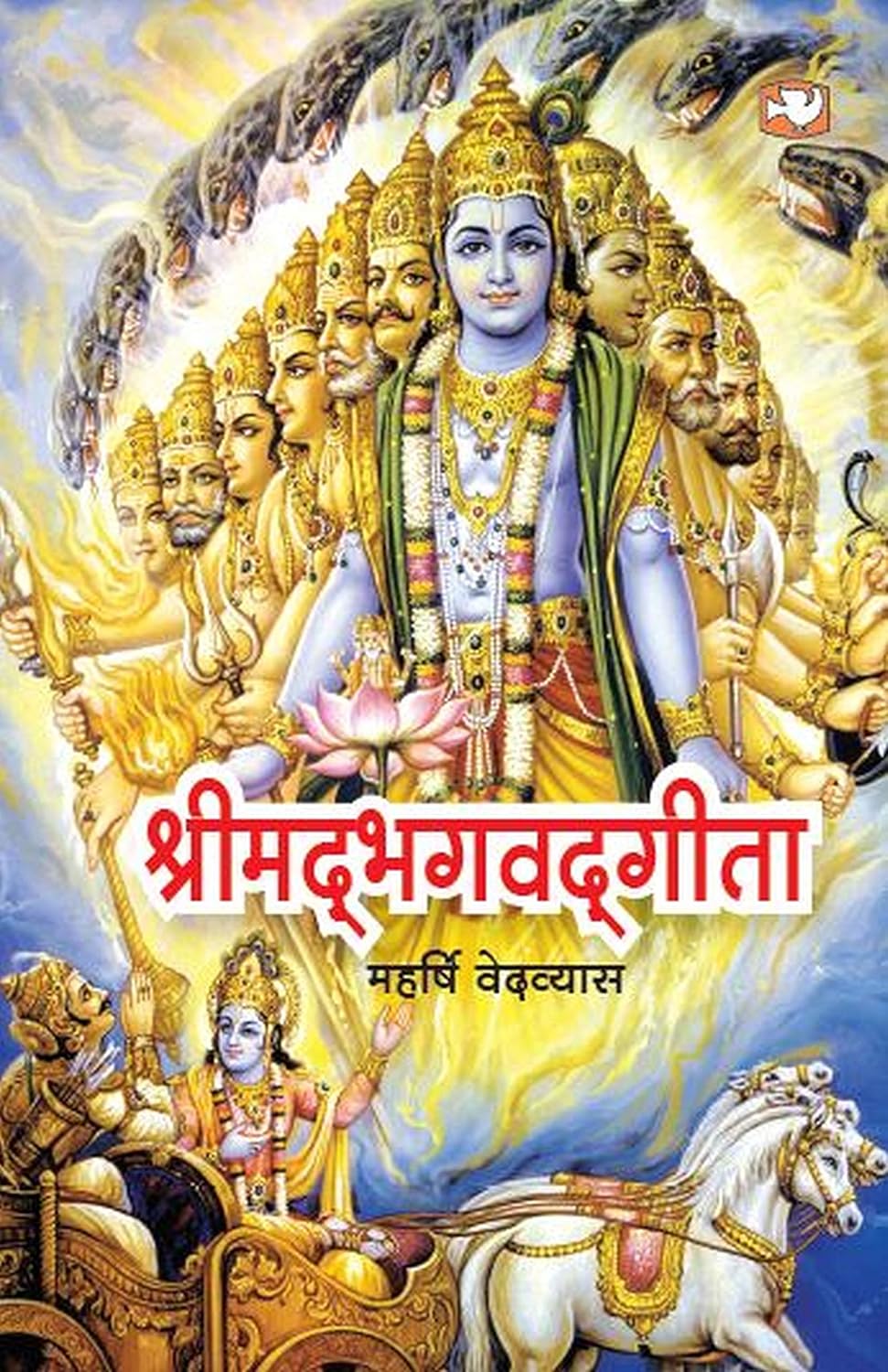
Availability
available
Original Title
Shrimad Bhagvad Gita
Subject & College
Series
Publish Date
2019-05-20
Published Year
2019
Publisher, Place
Total Pages
180
ISBN 13
978-9353490911
Average Ratings
Readers Feedback
Shrimad Bhagvad Gita
The Bhagavad Gita, often referred to simply as the Gita, is one of the most important texts in Hindu philosophy and spirituality. It is a...Read More
Gosavi Chandrakant Prakash
Shrimad Bhagvad Gita
The Bhagavad Gita, often referred to simply as the Gita, is one of the most important texts in Hindu philosophy and spirituality. It is a 700-verse dialogue between Prince Arjuna and his charioteer, Lord Krishna, which takes place on the battlefield of Kurukshetra just before the start of a great war. This philosophical scripture addresses the moral and ethical dilemmas faced by Arjuna and provides guidance on how to live a righteous life, perform one’s duties, and attain spiritual liberation.
2. Key Features:
Dialogue-Based Format: The book presents a conversation between Lord Krishna and Arjuna, which makes the teachings accessible and engaging.
Philosophical Teachings: It covers various paths to spiritual enlightenment, including Karma Yoga (selfless action), Bhakti Yoga (devotion), and Jnana Yoga (knowledge).
Timeless Relevance: The Gita addresses universal questions about life, duty, and the self, making it relevant across cultures and times.
Practical Wisdom: It provides practical advice for living a balanced and meaningful life while maintaining inner peace.
3. Summary:
The Bhagavad Gita begins with Arjuna feeling torn between his duty as a warrior and his reluctance to fight in a war that involves his family and friends. He turns to Krishna for guidance, and Krishna responds with profound teachings about life, duty, and spirituality. Over 18 chapters, Krishna explains concepts such as performing one’s duty without attachment to outcomes, the nature of the soul, and the importance of devotion and wisdom. The Gita ultimately guides Arjuna to overcome his doubts and perform his duty as a warrior with a clear mind and heart, free of attachment.
4. Themes and Insights:
Duty and Dharma: The Gita teaches that fulfilling one’s duty without attachment is crucial to living a righteous life.
Selfless Action (Karma Yoga): One should perform their duties without expecting rewards, focusing on the act itself rather than the result.
Devotion and Faith (Bhakti Yoga): Devotion to God is presented as a path to spiritual liberation.
Knowledge and Wisdom (Jnana Yoga): True knowledge of the self and understanding the imperishable soul leads to freedom from fear and doubt.
Detachment: Krishna advises Arjuna to detach from the results of his actions and focus on righteous conduct.
5. Personal Reflection:
Reading the Bhagavad Gita was a deeply enlightening experience. Its teachings resonated with me on a personal level, especially the emphasis on selfless action and focusing on the present moment without getting caught up in the outcomes. The philosophical ideas in the book offered me a new perspective on how to approach challenges in life, reminding me to perform my duties with integrity and without attachment. The spiritual wisdom shared in the text is timeless and universal, and it left me with a deeper understanding of the nature of life and the self.
6. Strengths:
Profound Teachings: The book offers deep philosophical insights that have remained relevant for thousands of years.
Clear and Accessible: Despite its complex themes, the Gita’s dialogue format makes it understandable and relatable.
Universality: The teachings transcend religious and cultural boundaries, making them applicable to all people, regardless of background.
Practical Wisdom: The Gita is not just a philosophical text; it provides practical advice for living a peaceful and fulfilled life.
7. Limitations:
Complexity of Concepts: Some concepts may be difficult to grasp for readers unfamiliar with Indian philosophy or spirituality.
Cultural Context: Readers from different cultural backgrounds may find it challenging to relate to some of the text’s traditional ideas, though the core teachings are universal.
Length and Repetition: The verses, while poetic, can sometimes feel repetitive, especially for first-time readers.
8. Who Should Read It:
Spiritual Seekers: Anyone looking for deeper spiritual wisdom or answers to life’s existential questions will find the Gita enriching.
Philosophy Enthusiasts: Those interested in philosophy, ethics, and human consciousness will gain a lot from its teachings.
People Facing Life’s Dilemmas: The Gita offers practical guidance for individuals dealing with personal challenges, especially regarding duty, morality, and purpose.
Students of Religion: Those studying Hinduism, Eastern philosophy, or comparative religion will find the Gita an essential text.
9. Conclusion:
The Bhagavad Gita is not just a religious text; it is a timeless guide to living a balanced and meaningful life. Its teachings offer wisdom on performing one’s duty, acting selflessly, and cultivating spiritual devotion. With its universal appeal and profound insights, the Gita has inspired generations of thinkers, leaders, and spiritual seekers. Whether you are looking for philosophical wisdom or practical life guidance, the Bhagavad Gita is a must-read that has the power to transform lives.”
